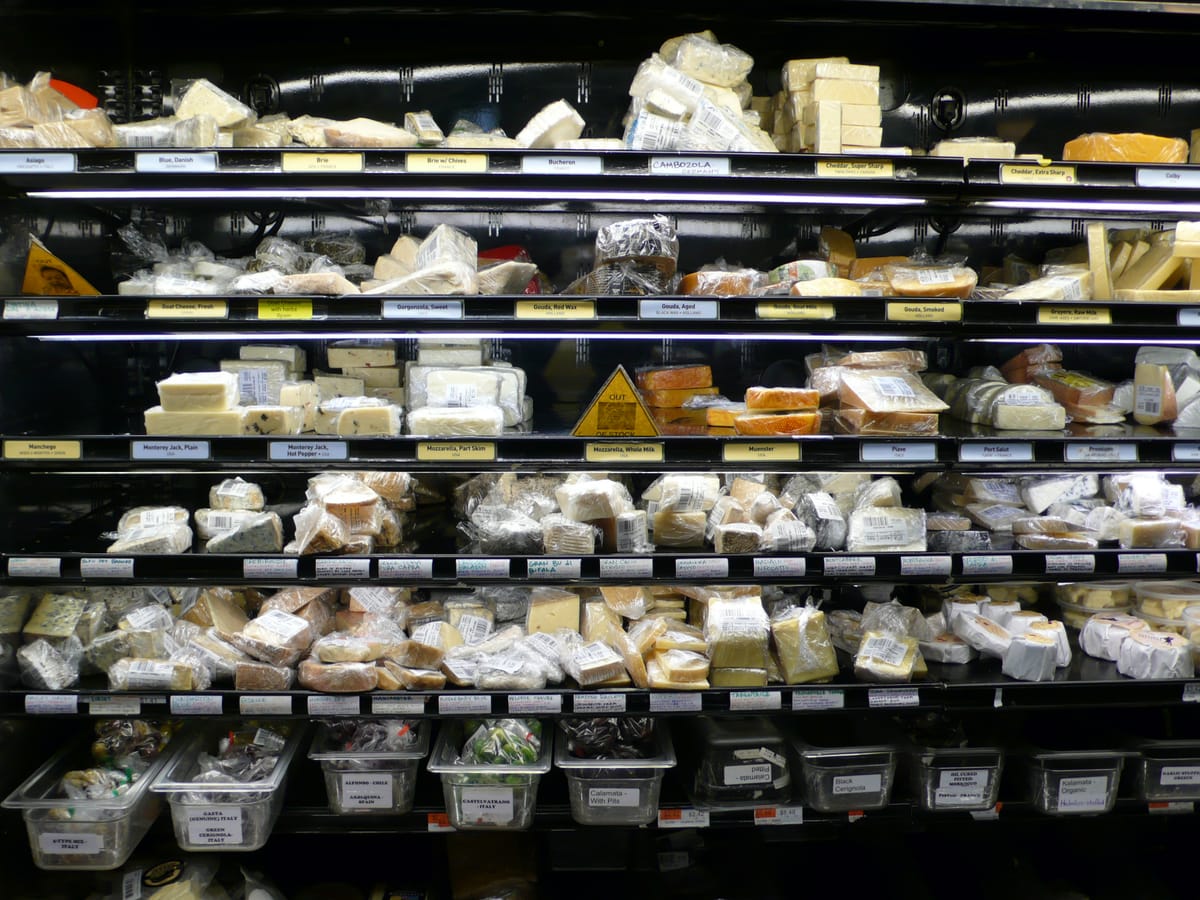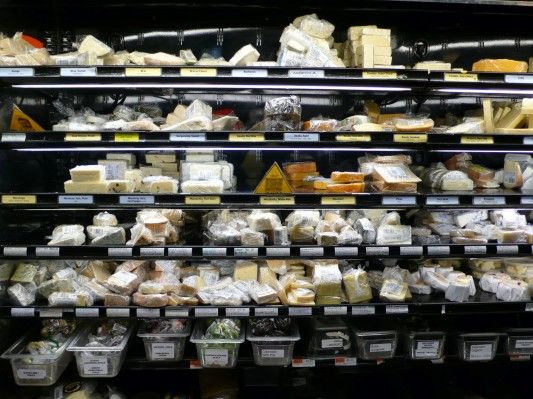This Week at the Coop: Cheese


Cheese. There’s nothing quite like it. And the Park Slope Food Coop offers an incredible variety. With so many choices, it’s hard to decide what kind of cheese to get. A little assistance, then, to help navigate the cheese case.
Of the standards, there isn’t much to report. Monterey Jack, Muenster, Havarti… These cheeses have their uses (though, frankly, Muenster escapes me), and the Coop’s offerings are high quality and inexpensive. Good buys abound. The cream cheese is outstanding, for instance. But these are cheeses with which most of us are familiar and which need no explanation.
There are variants of some of the more popular cheeses. For instance, a number of cheddars are on offer. The winner in this category is Cabot’s white cheddar. It is gratifyingly sharp without verging into sourness, and has a wonderful tangy flavor. At about $6 a pound it is more expensive than the NYS cheddar, but if you are making a dish that relies on the cheddar flavor (and most uses for cheddar do rely on its flavor) then the extra money is worth it. The more expensive Twin Oaks is also delicious, but it is much more expensive and not noticeably better than Cabot.
The blue cheeses are alluring. Danish Blue, Gorgonzola, and Roquefort are high profile blues. Of these, Roquefort is the most expensive, and one of the priciest cheeses the Coop sells, coming in just shy of $20 a pound. But a little Roquefort goes a long way. It’s a creamy, salty, slightly peppery, very tangy blue cheese. Mixed in with a vinaigrette, it will make an amazing contribution to a green salad. Where some Roqueforts are crumbly, the Le Meunier variety is smooth and creamy.
On the opposite side of the blue spectrum is Cambozola, a German blue cheese where the blue is barely noticeable. This mild, sweet, creamy cheese is a cross-breed, a combination of Camembert and Gorgonzola. So luscious it almost has the texture of a warm gelato, Cambozola is a blue cheese for people who don’t like blue cheese. It is ideal for a cheese plate, tasty without overpowering the competition.
Another good cheese plate entry is the aged, black wax Gouda from Holland. For years, smoked Gouda was a cheap and tasty cheese ($2.99 at Manhattan’s 3rd Avenue Cheese Shop for the longest time), leaving the impression that Gouda was a mild, rubbery, smokey cheese. The unsmoked variety can be a revelation, and the black wax Gouda is rich and complex. It is sharp and smooth and leaves the mouth buzzing. The goat milk Gouda is also pretty incredible, though more expensive.
There’s no better end to a good dinner party than a cheese plate. You can put together a great one without breaking the bank. Start with something mild, like a goat cheese. The inexpensive Coop variety will do, or you can opt for a more expensive (and more delicious) choice, like Monterey Chevre. Include a couple of stronger cheeses, like Cambozola and the black wax Gouda. Finish off with a strong cheese. Roquefort might work, or something like Taleggio, though if you want to pack a punch, serve Epoisses. It is a very smelly cheese that rewards those brave enough to try with a smooth and incredibly rich and textured flavor. It should be on anyone’s list of things to eat before dying. If you are unfamiliar with the cheese, it is a real treat.
Of course, cheeses should be served at room temperature, so make sure to take them out of the fridge a couple hours before offering them to guests. Enjoy!




